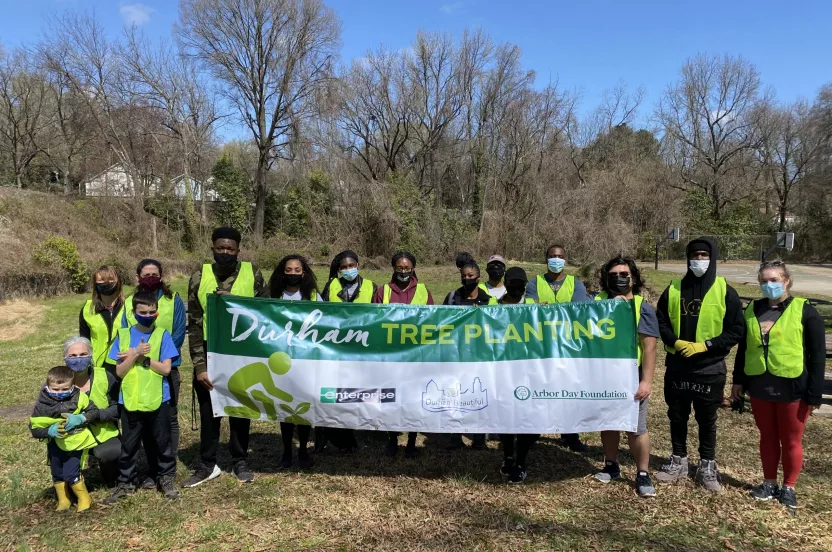Give before midnight on July 31 to double your impact where trees need us most. CHOOSE A PROJECT
If not, you should. It can save your life and protect the environment.
Guest post by Mary Patricia Kindt, Underground Safety Alliance.
Does 811 sound familiar? For tree lovers, or anyone who ever digs or does underground work of any sort, it’s a very important number to know. The “Call Before You Dig” number, better known as 811, is the national federally designated phone number for underground line locating. However, thanks to the progression of technology, there is now an easier and faster way to have your utility lines marked, and that is with online locate requests (learn more at Call811.com). Either way, 811 is synonymous with underground safety. Contacting 811 is free, and is a public service intended to keep the public and environment safe.
The 811 number has been around for 11 years, although the Call Before You Dig system was in place long before that. With population growth and the ceaseless construction boom that seems to surround us everywhere in the U.S., underground infrastructure has naturally become more crowded. Utility lines that perform their functions year after year with no issues suddenly become extremely volatile and dangerous when damaged or otherwise compromised during digging or construction projects. Damage to underground lines can potentially cause minor to severe environmental damage at the dig site and surrounding areas, as well as catastrophic financial penalties for the party doing the digging. Tragically, injury or even death may occur in some underground utility strikes.
Besides digging in the ground with power equipment or a shovel, other activities that disturb the ground can still cause utility damage and warrant a locate request. Examples include grinding a tree stump, driving a stake for a tent or other sign, and aerating lawns.
Although laws vary slightly from state to state, here are five basic steps for the 811 process:
-
Plan Your Project
Contact 811 by either submitting an online locate request or calling 811 the required number of days (which varies by state) before you plan on doing your digging. Dialing 811 will route you to your nearest one call center, no matter which state or area of the country you live in. Before you submit your locate request, make sure you have the details about where you will be digging, as well as the name and other details for the person who will be digging if it is someone other than yourself. “White lining” is highly recommended. This simply means marking the requested dig area with white paint or flags, so the utility line locator will only mark the area needed – which saves a lot of time.
-
Contact 811
Contact your local one call center by dialing “811” or submitting an online ticket request. Find more information about your state’s contact information and online ticket request portal by accessing the map provided by the Common Ground Alliance, the one call/811 industry’s national non-profit group:
-
Wait for the Marks
After you have submitted your locate request, wait for the marks to be completed (typically two to three full business/working days in most states). A facility marking representative will mark the lines in different colors that each correspond to a different utility.
-
Confirm the Marks
After the wait period (typically two to three full business/working days in most states), ensure that all utility operators have marked their lines by comparing the marks on the ground with the list given to you when you made the request. It is important to note that more than one utility locator may visit your site.
-
Dig With Care
Now the process is nearly complete! Just remember to dig with care. Each state has a “tolerance zone,” which is a recommended dig distance from the marks that allows for any shifting of the utility in the ground and is an additional safety precaution.
When planting a tree, it is essential to keep a few additional things in mind. Research the root and branch spread for the type of tree you are planting, and calculate how this will affect existing utilities, both in and above ground! This can save an abundance of heartache down the road. Planting a tree is a lifelong investment, so be sure to plant it where it will thrive for generations to come.
Remember that the 811 system is designed for the preservation and safety of both the public and the environment. Please use this vital service that serves as your underground sight. For more information on 811 nationally and in your local community, please visit the Common Ground Alliance at: www.commongroundalliance.com
Mary Patricia Kindt is the Marketing Director at Underground Safety Alliance, which is comprised of Indiana and Kentucky 811.








